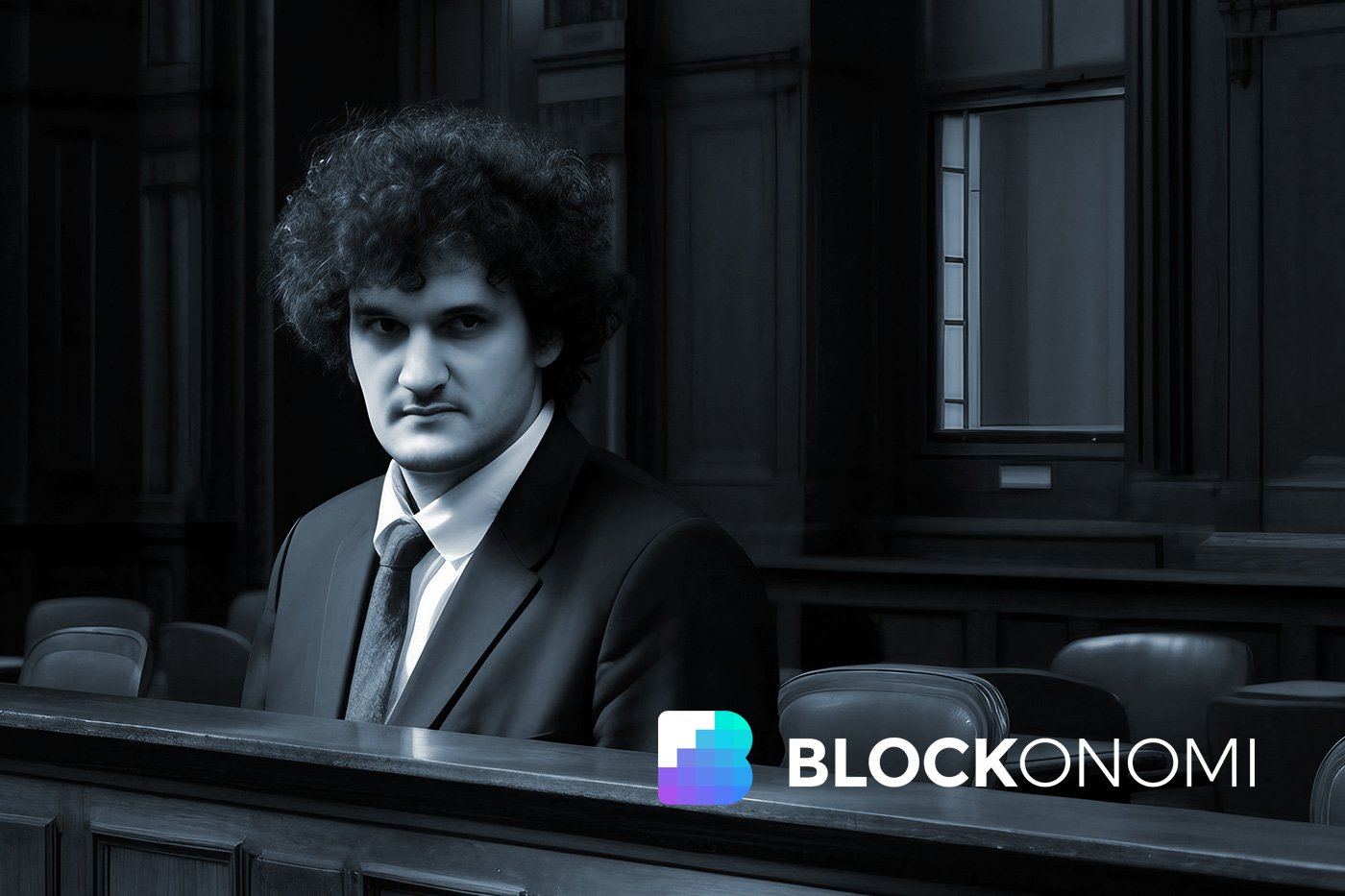Sam Bankman-Fried (SBF), the co-founder and former CEO of the FTX cryptocurrency exchange, was convicted of all seven fraud charges in his first criminal trial. Former FTX CEO SBF faces up to 115 years behind bars after being found guilty on all counts related to wire fraud and money laundering. A New York Jury reached the verdict after five weeks of testimonial, as reported by Reuters.
Keypoints
- Sam Bankman-Fried was convicted on 7 counts related to fraud at FTX by a jury in New York. The verdict was unanimous and reached quickly, after only 4 hours of deliberation.
- Prosecutors alleged SBF misused FTX customer funds, siphoning them for personal investments and donations. The fast verdict signals the strength of the prosecution’s case.
- FTX’s collapse fueled mistrust of the crypto industry, stalling legislative efforts to regulate digital assets in the US. However, the sector lives on, with bitcoin prices rebounding in 2023.
- The SBF verdict disproves concerns about prosecuting crypto fraud, showing bad actors will face consequences. This could bolster consumer confidence in crypto.
- The decision is seen as a milestone that could encourage mainstream adoption of crypto and growth of market infrastructure. It demonstrates the legal system can address crime in this new space.
- Industry insiders express optimism the verdict will set a precedent for prosecuting fraud by crypto companies going forward. It signals a commitment to accountability and transparency in the ecosystem.
- Overall, the unequivocal guilty verdict against SBF is seen as a turning point for crypto’s image and maturity. Though its bubble burst, backers hope for a more secure, regulated market moving forward.
Trial Wraps Up – Bye Bye SBF!
The 31-year-old was found guilty of all seven criminal charges against him, which includes two charges of defrauding FTX customers and Alameda Research’s lenders, and five charges of conspiracy to commit fraud and money laundering.
As each charge carries up to 10 to 20 years, SBF faces a maximum of 115 years in jail. The sentencing decision is set to take place on March 28, 2024.
Other key figures from FTX and Alameda Research, including former Alameda CEO Caroline Ellison, FTX founder Gary Wang, and former FTX head of engineering Nishad Singh, previously cooperated with the government and testified against Sam Bankman-Fried after pleading guilty to multiple charges.
According to Bloomberg, they are unlikely to be jailed, but they may face fines.
Ellison, SBF’s formerly closest ally, admitted that she and Bankman-Fried stole about $14 billion from FTX customers. The money was then used for venture capital investments, political donations, real estate investments, and flashy real estate in the Bahamas, where FTX is headquartered.
Throughout his trial, SBF called the collapse of FTX “some big mistakes” and refuted any wrongdoing in the relationship between FTX and Alameda. He also blamed Wang for creating a function that allowed Alameda to use customer funds, claiming that he was entirely unsure what happened to Alameda’s credit line.
Upon the trial wrap-up, prosecutors claimed that Bankman-Fried indeed knew he conducted wrongdoing when secretly moving money from the FTX exchange to his Alameda Research hedge fund. Danielle Sasson, Assistant U.S. Attorney, criticized the former FTX CEO’s arrogance and asked the jury to convict him.
On the other hand, Mark Cohen, the defense attorney, expressed disappointment after the court, adding that Bankman-Fried maintained his innocence and would continue to fight the charges.
Market Reactions….
The co-founder of FTX was once the leading figure of the cryptocurrency industry. In 2021, Forbes magazine headlined that Bankman-Fried was richer than anyone at his age except for Mark Zuckerberg, the CEO of Meta. Forbes estimated Bankman-Fried’s fortune at $26 billion.
However, the brutal collapse of FTX exchange in November 2022 turned his successful empire into one of the most shameful crypto stories.
“Sam Bankman-Fried perpetrated one of the biggest financial crimes in American history,” U.S. Attorney Damian Williams said in a statement after the trial. Williams also sent a strong message to all fraudsters, warning that they cannot escape punishment, no matter how powerful they are or how complex their crimes may be. “We have enough hand-cuffs for all of them,” he concluded.
The guilty verdict has generated mixed opinions across crypto channels, influencers, and some industry figures. Venture capitalist Adam Cochran said other operators should take SBF’s case as a clear warning.
However, many suggest that there is no victory as investors are still in the process of recovering from the crisis.
Prosecutors estimate that more than $8 billion of customer money disappeared by the time FTX went bankrupt. FTX owes its 50 largest creditors nearly $3.1 billion and total liabilities are estimated at more than $10 billion. There are about 1 million customers and other investors who have become victims of FTX.
Almost a year after the incident that extended the market setback, the case of Sam Bankman-Fried and his fraudulent businesses have come close to the end. It will likely bring more regulatory scrutiny on cryptocurrency but at the same time motivate the establishment of more transparent, clearer regulations.
Where Does Crypto Go Next?
Trust is the cornerstone of any financial system, and the scandals of 2022 shook faith in cryptocurrency to its core. However, with justice now served, there is hope that crypto can begin rebuilding its reputation and credibility. The swift prosecution of SBF’s crimes shows regulators have the tools to hold bad actors accountable, even in new frontiers like crypto.
Leading crypto firms are calling for sensible regulation, not restrictive clampdowns. The goal is judicious guardrails to prevent fraud and abuse, while allowing innovation in blockchain technology to flourish. Groups like the Crypto Council for Innovation are advocating for policies like targeted consumer protections, secure custody requirements, and anti-money laundering rules. Self-regulation is also increasing, with transparency a top priority.
Mainstream adoption by banks and investors appears poised to continue, albeit at a more measured pace. Despite recent turmoil, the core technological promise of cryptocurrencies remains. Usage is growing in finance, supply chains, NFTs, the metaverse and beyond. And bitcoin has proven remarkably resilient, quickly bouncing back to the $20,000 range after the FTX bankruptcy.
With the criminal misdeeds of the SBF era now in the past, the industry can focus on sustainable growth. The values of decentralization and democratization that underpin crypto continue to hold great appeal. No doubt there will still be challenges, but for true believers, the ethos of web3 remains strong. Executives across crypto are urging the community to learn from recent mistakes in order to build a more principled future.
The public also has a role to play, as their trust and participation is essential for the industry’s revival. Consumers should research crypto investments diligently, and beware of promises that seem too good to be true. With time and continued maturity, crypto has the opportunity to emerge from recent scandals smarter and stronger, restoring its reputation as a transformative financial technology. If the industry can double down on transparency, accountability and reliability, the post-SBF era has the potential to be a turning point and a new beginning.







































